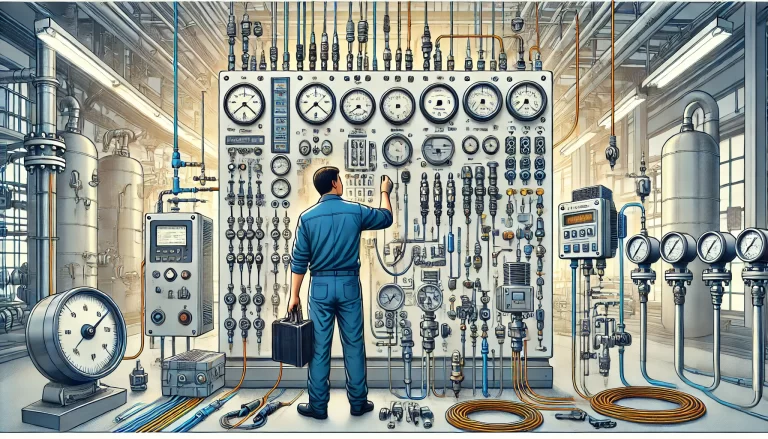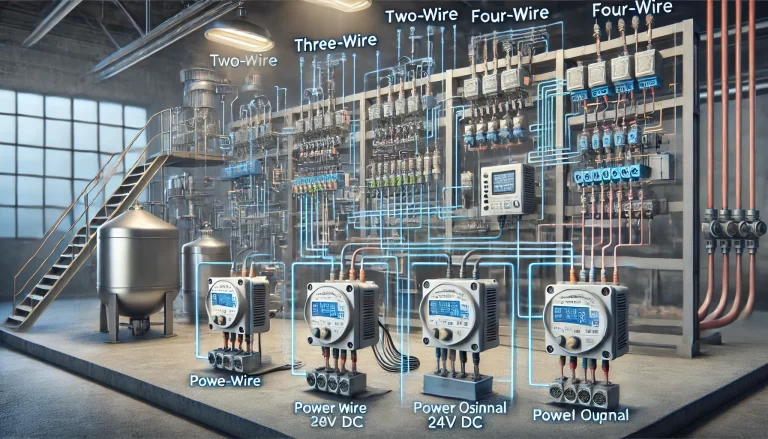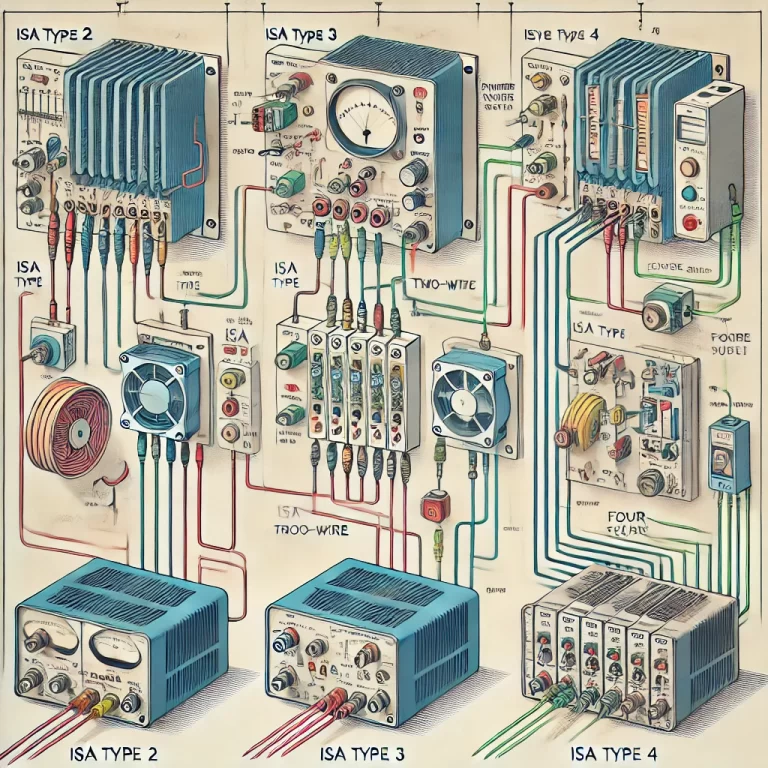In industrial settings, the wiring of instrument cables can often present challenges, especially when the cables are significantly longer than necessary and are coiled into loops at the installation site. Although seemingly a simple issue, coiled, excess-length instrument cables can introduce various problems that impact signal integrity, safety, and the overall functionality of the system. This article explores the technical implications of long, coiled instrument cables and provides practical recommendations for managing excess cable length in industrial environments.

Why Excess Cable Length and Coiling Is a Problem
Electromagnetic Interference (EMI)
- Inductive Loops: When a cable is coiled into loops, it forms an inductive loop, much like a coil in an electric circuit. This coil structure can induce currents when exposed to nearby magnetic fields. If the coiled cable is located near high-voltage equipment, power cables, or sources of fluctuating magnetic fields, the induced currents in the loop can create electromagnetic interference (EMI).
- Signal Distortion: For sensitive instrumentation that relies on accurate data transmission, this interference can distort the signal, leading to inaccurate readings or unstable signals. In process control and measurement, signal integrity is essential, and EMI can disrupt the normal function of sensors, transmitters, and other instrumentation.
Signal Degradation and Attenuation
- Capacitive and Inductive Effects: Excess cable length introduces additional capacitance and inductance. This can cause signal degradation, particularly in analog signals, as they may attenuate or weaken over longer distances.
- Resistance Impact: As the distance increases, so does the overall resistance of the circuit. Over long cable runs, especially if the excess cable is coiled, there may be an increased voltage drop, further impacting the reliability of the measurement and signal transmission.
- Frequency-Dependent Losses: Higher-frequency signals, such as digital data transmission, can suffer more in terms of attenuation. In systems relying on higher-frequency signals, the coiling and excess length may lead to data loss, requiring signal conditioning to counteract these effects.
Safety Hazards
- Heat Buildup: Coiled cables, especially in areas with high ambient temperatures, can cause localized heat buildup. Since coiled cables can limit airflow around the wiring, this excess heat can lead to insulation breakdown or, in extreme cases, become a fire hazard.
- Mechanical Hazards: Excess coiled cable lying on floors or other accessible areas may pose tripping hazards or become subject to mechanical damage. The risk of cable sheath damage increases with the number of loops, and damaged sheaths can lead to exposed wiring, increasing both electrical and mechanical risks for personnel and equipment.

Practical Recommendations for Managing Excess Instrument Cable Length
Accurate Cable Length Estimation and Minimization
- Pre-Installation Planning: During the project planning stage, accurately estimate the required cable lengths. This can help minimize the amount of excess cable that needs to be managed on-site.
- Cut to Exact Length: In cases where the exact length is known and permanent, consider having cables cut to size or customize the lengths during installation. Many cable providers offer services for cutting cables to specific lengths.
Cable Routing Techniques
- Distributed Lengths: Rather than coiling excess cable in a single area, consider distributing the excess length across the route. By weaving the cable in a zigzag pattern along its path, the effects of inductance and capacitance can be minimized, and the chances of interference can be reduced.
- Placing in Low-EMI Areas: Position excess cables in areas with minimal sources of EMI. Routing cables away from power lines, transformers, and high-frequency equipment will help reduce the risk of interference.
Use Shielded and Twisted-Pair Cables
- Signal Integrity Protection: Shielded cables are designed to prevent external electromagnetic interference, and twisted-pair cables can counteract the effects of inductance. Where possible, use shielded and/or twisted-pair cables, especially in areas prone to EMI.
- Grounding: Proper grounding of the shielding also plays a significant role. Ground the shielding at a single point to avoid ground loops that can introduce noise.
Signal Conditioning
- Repeaters and Amplifiers: For very long cable runs, using signal repeaters or amplifiers can help maintain signal strength. These devices are particularly useful for analog signals that may degrade over distance.
- Filters and Isolators: Installing filters or isolators can reduce the impact of EMI on sensitive signals, especially in high-noise environments.
Alternative Cable Management Solutions
- Cable Trays and Channels: Use cable trays or channels to organize excess lengths neatly rather than coiling them. The cable can be routed back and forth within a tray, which avoids the formation of large coils.
- Outdoor or Remote Installations: For outdoor or remote installations where excess cable may be unavoidable, it’s possible to securely place cables in low-exposure areas or within protective tubing to prevent environmental wear and tear, while also managing length neatly without coiling.

Conclusion
Excessively long and coiled instrument cables, while a common occurrence on industrial sites, present challenges that can impact both the performance and safety of the system. The coiling effect can induce electromagnetic interference, attenuate signals, and create potential hazards if not managed correctly. By adopting better planning, using appropriate cable types, and implementing effective cable management techniques, facilities can mitigate these risks, ensuring that instrument signals remain reliable and accurate while reducing hazards associated with excess cable lengths.
In summary, managing excess cable length is not merely an organizational issue but an essential part of maintaining a safe and efficient instrumentation setup.
